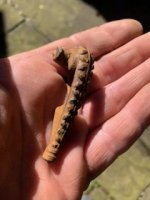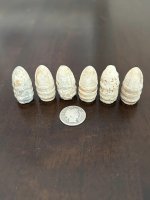Hal Croves
Silver Member
- Sep 25, 2010
- 2,659
- 2,695
- Thread starter
- #41
Remember President Diaz was responsible for providing the map, funding for the search, and was friends with both the land owner and Berson.
This may simply be coincidence, but if one starts to study the story, the landscape, and those involved, this simple pattern becomes something more.
This may simply be coincidence, but if one starts to study the story, the landscape, and those involved, this simple pattern becomes something more.
Amazon Forum Fav 👍
Last edited:


 As the days progressed, the workers began to take interest in what he was doing. And each day, they would ask him what he'd found. He'd show them the day's finds, and ... even pass out IH's and V nickels (if he knew they weren't key-dates), as ... uh .... "bribes" haha.
As the days progressed, the workers began to take interest in what he was doing. And each day, they would ask him what he'd found. He'd show them the day's finds, and ... even pass out IH's and V nickels (if he knew they weren't key-dates), as ... uh .... "bribes" haha. 


